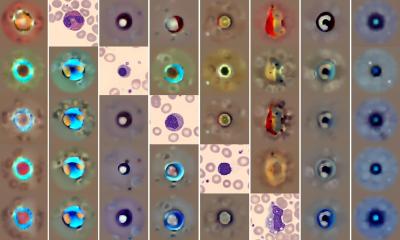Breakthrough
Early detection of leukemia patients' resistance to therapy
Australian researchers have made a world-first breakthrough in the early detection of patients' resistance to a common treatment for chronic myeloid leukemia. The discovery offers some hope that the patients' treatment could be changed sooner to improve their chances of survival.

The researchers – based in the Cancer Theme at the South Australian Health & Medical Research Institute (SAHMRI) and the University of Adelaide's School of Medicine – have developed a new test that they believe could be adopted by doctors worldwide.
Lead author and postdoctoral researcher Dr Laura Eadie says one-in-five chronic myeloid leukemia (CML) patients are resistant to the leading treatment of their condition. "The development of the targeted drug Glivec for chronic myeloid leukemia has been one of the most remarkable success stories in cancer treatment over the past two decades. This is because the drug targets the mutant protein that causes their leukemia," Dr Eadie says. "However, about 20% of patients have a poor response to Glivec, and until now we haven't fully understood why. Unfortunately, this means that one-in-five patients could be receiving treatment that ultimately is not benefitting them, losing response to therapy and reducing their chances of survival."
The study looked at the role of P-glycoprotein, a protein that pumps many drugs – including Glivec – out of leukemia cells. "Some patients were found to have higher levels of P-glycoprotein in their leukemic cells after just a few weeks of starting therapy. These patients were much more likely to develop resistance to Glivec later on," Dr Eadie says. "We've found the greater the increase in P-glycoprotein in patients, the greater their risk is of becoming resistant and not responding to their drug any more, or even succumbing to their disease."
The research team's work shows, for the first time, that assessing a patient's levels of the P-glycoprotein soon after they start receiving Glivec therapy will help to predict that patient’s long-term response to the drug. "This new test, developed in our laboratory, may provide an opportunity for doctors around the world to change treatment strategies for those patients most at risk of doing poorly on Glivec before they actually lose response to the therapy," Dr Eadie says.
Dr Eadie is also the recipient of a 2016 Fulbright South Australia Postdoctoral Scholarship. In August she will travel to the United States to continue research into leukemia, based at the St. Jude Children’s Research Hospital in Tennessee. This work will continue her focus on the effectiveness of leukemia treatments and the mechanisms of resistance in patients. "I hope that by better understanding the key drivers of response and resistance in patients, these research findings will help to inform clinical practice and ensure the best possible chance of patient survival," she says.
Source: University of Adelaide
08.08.2016











